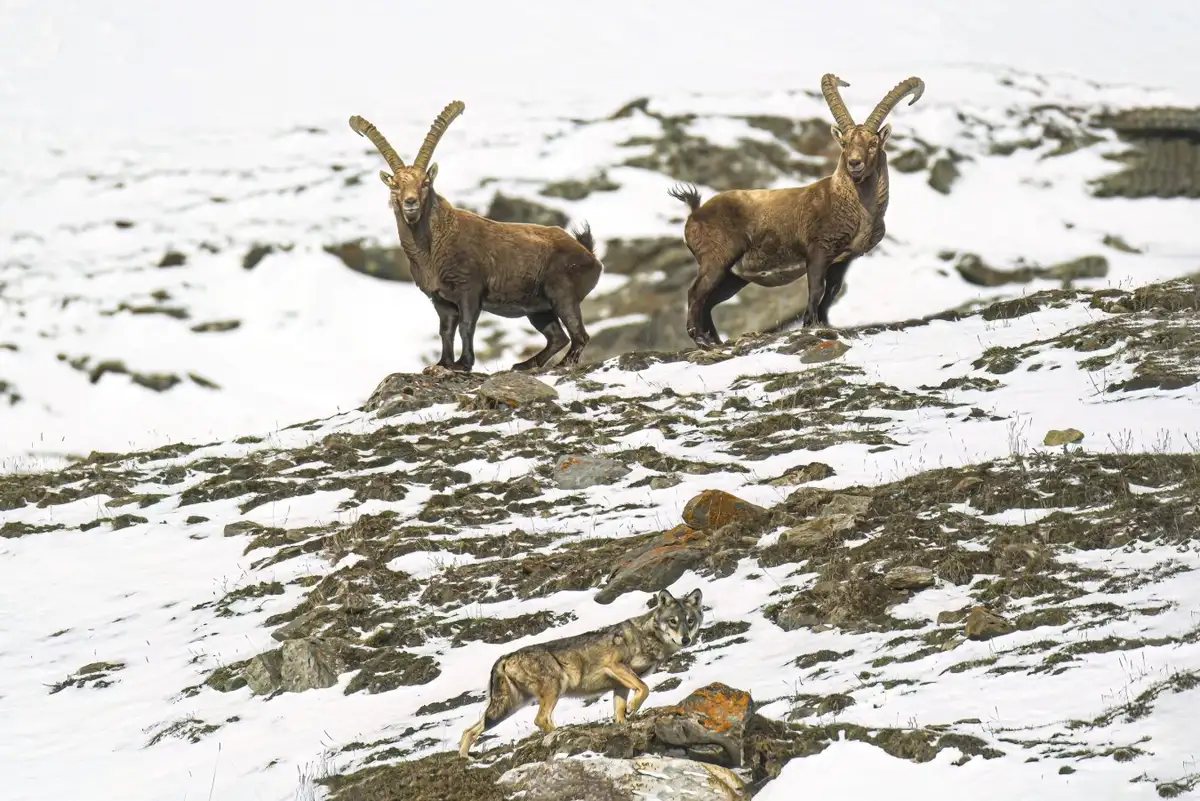Alpine ibex (Capra ibex) is increasingly adopting nocturnal habits, according to a study by Stefano Grignolio and his colleagues at the University of Ferrara in Italy.
In a surprising adaptation to rising daytime temperatures in Europe’s Alps, Alpine ibex (Capra ibex) is increasingly adopting nocturnal habits, according to a study by Stefano Grignolio and his colleagues at the University of Ferrara in Italy. This behavioral shift, aimed at escaping the scorching effects of global warming, comes with a heightened risk of encounters with their primary predators, wolves.
To understand the impact of climate change on these mountain-dwelling creatures, the researchers tracked 47 individuals in Italy’s Gran Paradiso National Park and the Swiss National Park between May and October from 2006 to 2019. Equipped with motion sensor collars, the ibexes revealed a significant adjustment in their activity patterns in response to higher temperatures during daylight hours.
“When there were higher temperatures during daylight hours, the ibex were more active at night,” notes Grignolio, highlighting the unexpected nature of the findings. While predation is a factor, the primary driving force behind this change in behavior appears to be the need to evade the daytime heat associated with global warming.
As climate-sensitive animals, Alpine ibexes are likely transitioning to a nocturnal schedule to minimize energy expenditure required for cooling during warmer daytime temperatures. Grignolio explains that coping with the heat becomes a priority, even if it means risking encounters with wolves, a notable threat to their safety.
However, the researchers caution that this nocturnal adaptation might not be a sustainable long-term solution for the ibex population. Niels Martin Schmidt from Aarhus University in Denmark expresses concerns, stating that if the ibexes become too nocturnal, they may struggle to meet their dietary requirements or face an increased risk of predation.
While this study sheds light on the subtle and often overlooked responses of animals to climate change, it also emphasizes the potential challenges and limitations associated with such adaptations. Schmidt commends the research for providing a quantitative analysis of these nuanced behavioral changes, reinforcing the importance of considering various aspects of species’ responses to environmental shifts.
As the world grapples with the far-reaching consequences of climate change, the plight of the Alpine ibex serves as a poignant reminder of the delicate balance between survival strategies and the long-term viability of species in the face of a changing climate.
